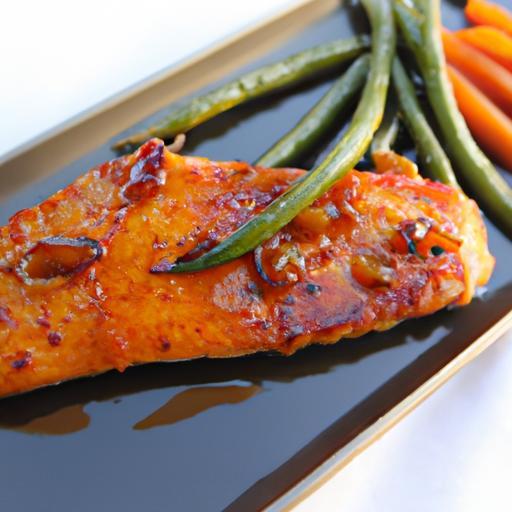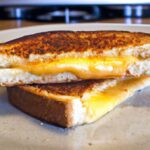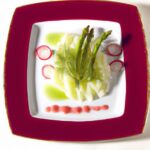When a stainless steel pan hits the heat, it’s not just a kitchen ritual-it’s a sizzling scientific symphony. Behind every perfectly seared steak and caramelized onion lies a complex dance of molecules, metals, and temperatures. “Searing Science: The Chemistry Behind Stainless Steel Pans” invites you to step beyond the surface shimmer and explore how chemistry transforms ordinary cooking into extraordinary flavor. From the microscopic makeup of stainless steel to the Maillard reaction’s flavorful fireworks, this article will unravel the secrets that make your pan more than just cookware-it’s a crucible of culinary chemistry.
Searing Science: The Chemistry Behind Stainless Steel Pans
Mastering the art of searing is both a culinary skill and a scientific journey. Searing Science: The Chemistry Behind Stainless Steel Pans unlocks the secrets to why stainless steel cookware stands as the ideal partner for achieving that perfect crust and depth of flavor. From the unique alloy makeup to how heat dances across the surface, this guide will turn your daily cooking into a savory symphony of texture and taste.
Prep and Cook Time
- Prep Time: 10 minutes
- Cook Time: 15 minutes
- Total Time: 25 minutes
Yield
Serves 4
Difficulty Level
Medium
Ingredients
- 2 lbs boneless beef ribeye steak, room temperature
- 2 tbsp high smoke point oil (grapeseed or canola oil)
- 1 tbsp unsalted butter
- 3 garlic cloves, smashed
- 2 sprigs fresh thyme
- 1 tsp kosher salt
- 1/2 tsp freshly ground black pepper
Instructions
- Prepare the steak: Pat the ribeye dry with paper towels to remove moisture-this promotes better browning. Season generously with kosher salt and black pepper on both sides.
- Preheat stainless steel pan: Place your stainless steel pan on medium-high heat for about 3-5 minutes until it is evenly hot. The unique heat conductivity of the alloy ensures rapid and consistent heating.
- Oil the pan: Add 2 tablespoons of oil and swirl to coat the surface evenly. A shimmering oil surface signals it’s ready.
- Sear the steak: Place steak carefully into the pan. Avoid moving it prematurely; let it form a crust. Cook for 4-5 minutes on one side, appreciating how the pan’s surface texture creates Maillard reaction hotspots for browning.
- Flip and add aromatics: Turn the steak using tongs, add butter, garlic, and thyme. Tilt the pan slightly and spoon melted butter over the steak. This boosts flavor development and promotes an even sear.
- Finish cooking: Depending on the thickness, cook 3-5 minutes more until desired doneness (use a meat thermometer: 130°F for medium-rare).
- Rest the steak: Transfer to a plate and cover loosely with foil for 5-7 minutes. Resting retains juices and completes flavor infusion.
Chef’s Notes
- Stainless steel’s surface texture is not perfectly smooth; those microscopic grooves and pits trap flavorful browned bits-these fond pieces add magic when deglazed.
- Maintain your pans by deglazing immediately after cooking with wine or broth to clean and capture flavors.
- Variation: Try using fish or chicken breasts with this technique-adjust cooking time accordingly.
- Common issue: If food sticks, your pan wasn’t hot enough or protein wasn’t sufficiently dried-both are key for that flawless sear.
- Use a premium stainless steel pan guide to find ideal cookware for your kitchen.
Serving Suggestions
Slice the rested steak against the grain and arrange on a warm plate. Garnish with a sprig of fresh thyme and a light drizzle of the pan’s flavorful butter jus. Pair with roasted garlic mashed potatoes and lightly steamed asparagus for an elegant, comforting plate that celebrates science and flavor.

| Nutrient | Amount per Serving |
|---|---|
| Calories | 490 kcal |
| Protein | 45 g |
| Carbohydrates | 0 g |
| Fat | 35 g |
For a deeper understanding of why stainless steel remains a classic choice in professional kitchens, check out this insightful scientific resource on stainless steel alloys.
Q&A
Q&A: Searing Science – The Chemistry Behind Stainless Steel Pans
Q1: What makes stainless steel pans ideal for searing?
A1: Stainless steel pans offer a unique balance of heat conductivity, durability, and chemical stability. Their alloy composition – primarily iron, chromium, and nickel – creates a surface that withstands high temperatures without degrading. This allows for the intense, even heat necessary to produce that coveted caramelized crust on your steak or veggies.
Q2: How does searing work on a chemical level?
A2: Searing is all about the Maillard reaction, a chemical dance between amino acids and reducing sugars in food. When the food surface hits temperatures around 300°F (150°C), these molecules rearrange and create complex flavors and browning pigments called melanoidins. Stainless steel’s ability to maintain even heat ensures this reaction happens efficiently and beautifully.
Q3: Why doesn’t food stick as much to stainless steel pans during searing?
A3: Contrary to popular belief, stainless steel isn’t non-stick by nature. However, when properly preheated and generously oiled, the oil creates a temporary barrier. The oil molecules fill the microscopic valleys of the steel’s surface, preventing food proteins from bonding directly to the metal. This “oil cushion” is crucial to getting that perfect sear without sticking.
Q4: How does stainless steel differ chemically from non-stick or cast iron pans in searing?
A4: The chromium in stainless steel forms a protective oxide layer, making it corrosion-resistant and less reactive than cast iron, which is essentially pure iron and can react with acidic foods. Non-stick pans have a polymer coating that prevents adhesion but degrade at higher temperatures, limiting the searing potential. Stainless steel, uncoated and chemically stable, thrives at high heat, perfect for that scientific sear.
Q5: Does the thickness or layering of stainless steel pans affect the searing process?
A5: Absolutely. Many stainless steel pans are “clad” with layers of aluminum or copper for enhanced heat conduction. Aluminum and copper conduct heat faster and more evenly than stainless steel alone. This multilayer construction reduces hot spots and promotes uniform Maillard reactions across the entire pan surface, resulting in evenly seared food.
Q6: Can the chemical composition of stainless steel influence flavor?
A6: While stainless steel is designed to be inert, trace metals can sometimes interact subtly with food, especially in poorly made pans or with acidic ingredients. However, with high-quality stainless steel, the flavor impact is negligible. What really defines the flavor profile is the searing chemistry itself – the Maillard reaction – not the pan’s metal.
Q7: How should one care for stainless steel pans to maintain their chemical properties for the best searing?
A7: Maintaining the pan’s oxide layer and surface integrity is key. Avoid abrasive cleaners that strip the protective chromium oxide film; instead, use gentle scrubbing with specialized stainless steel cleaners or a mix of vinegar and baking soda. Proper seasoning with oil before cooking creates that vital oil cushion, enhancing searing and minimizing sticking. A chemically sound pan equals perfect sear every time.
Searing on stainless steel pans isn’t just cooking – it’s a fascinating chemistry experiment in your kitchen. By understanding the elements at play, from metal alloys to molecular reactions, you can wield your pan like a scientist armed with flavor, precision, and a little bit of heat.
Final Thoughts
As the sizzle quiets and the last wisps of aroma fade from your kitchen, the story of stainless steel pans continues beyond the surface of your skillet. The alchemy of heat, metal, and food is no mere coincidence-it’s a carefully choreographed dance dictated by the principles of chemistry and physics. From the microscopic layers of chromium oxide that protect the pan’s gleaming finish to the precise temperature control that forms that coveted crust, understanding the science behind stainless steel elevates cooking from routine to remarkable. So next time you reach for that trusty pan, remember: you’re not just searing dinner-you’re engaging in a beautiful blend of art and science that transforms simple ingredients into culinary masterpieces.


